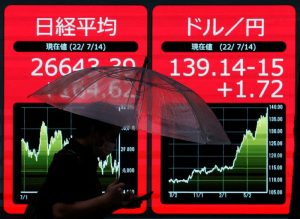(ATF) In the shadow of equity markets, the integration of environmental, social and governance (ESG) factors in sovereign markets is in its embryonic phase.
For a start, because sovereign debt is traditionally considered a risk-free asset class, the importance of ESG integration has been underestimated, at least in developed markets.
It is also harder to assess ESG-related risk on debt issued by two different countries compared with two different companies. That is partly due to a lack of consistency in defining and measuring material ESG factors, and the limited availability of data.
This is starting to change, however, as sovereign investors are realising environmental and social issues can have a material impact on valuations, particularly in emerging markets.
Regulatory hurdles
The regulatory incentive for financial institutions to hold assets deemed safe and liquid stands as a hurdle.
Institutional investors are often mandated to hold a minimum percentage of their total assets in domestic sovereign bonds or the deepest and most liquid markets.
That means, unlike investing in equities or corporate bonds, the option to take money elsewhere may not be available.
The US, for example, would arguably score poorly on many ESG criteria as one of the world’s biggest polluters, its deep social divisions and high inequality, and being the world’s biggest arms manufacturer.
At the same time, it is the world’s largest and safest government bond market: exiting it would be inconceivable for many investors.
The engagement challenge
Engagement, as seen in equity markets, is far less common between the owners and issuers of debt. A 2017 report by the Principles for Responsible Investment showed 58% of signatories did not engage with sovereign issuers.
Nevertheless, the increased focus on ESG factors by both clients and regulators is providing investors with an incentive to integrate these considerations into sovereign credit analysis.
If climate change and some of the other pressing issues are to be addressed with sufficient haste, governments need to step up.
The extent to which deficits have skyrocketed due to the pandemic means many will be in desperate need of funding for years to come. Even if divesting may not always be an option, this should provide investors with an opportunity to engage more effectively.
The power of collective action
While some firms may feel they lack sufficient size to influence sovereign issuers’ behaviour, collaborative investor action can be highly effective.
As an example, last year Aviva Investors collaborated with like-minded investors to engage with the Brazilian government on its environmental practices. With Brazil increasingly reliant on global capital markets to fund its budget deficit, this culminated in a series of high-level ministerial meetings, including with the Brazilian vice president and other influential legislators.
Brazil subsequently announced a series of positive measures in response, including a 120-day moratorium on forest fires – an encouraging first step that hopefully provides a blueprint for further collaboration between investors.
Engaging with investors makes sense from the borrower’s perspective too. Debt roadshows provide investors an opportunity to engage governments, point out climate change poses an investment risk, and ascertain the steps they are taking to meet their international commitments.
Growing investor appetite for sustainable bonds also holds out the prospect of lower funding costs, which could improve the ability of countries to meet their climate pledges at the same time as mitigating future climate-related catastrophes.
Sustainable bond boom
Richer countries remain among the world’s biggest polluters. Although investors may consider themselves to be in a weaker position to engage with them, the apparent rise in extreme weather events in recent years in countries such as Japan, Germany, Australia and the US could present an opportunity.
According to data provider Refinitiv, sustainable bond issuance totalled a record $544.3 billion in 2020, more than double the previous year, with sovereign debt accounting for just over a quarter.
These developments help explain why even richer countries are starting to see the attraction of such bonds. The green sovereign bond market has mushroomed in recent years, especially in Europe, providing investors with a further opportunity to engage governments.
In September 2020, Germany attracted more than ?33 billion of bids for up to ?6 billion of green bonds. Italy recently sold ?8 billion of debt, the biggest debut sovereign green bond from a European issuer, while in March the UK announced plans to sell at least £15 billion of green bonds later this year.
The market looks ripe for rapid expansion, especially with several countries contemplating big ‘green’ infrastructure projects.
Sustainable debt is expected to make up around a third of the EU’s ?750 billion recovery fund over the next five years. As for the US, there is speculation it could issue its first green bond, perhaps in the run-up to November’s COP26 summit.
The challenges that have historically impeded engagement with sovereign issuers are not going to disappear overnight. That is partly because the option to divest from the safest and most liquid markets is often not available.
But as ESG factors take on ever more significance, even the richest countries may find their debt, at the margin, harder to sell unless they take sustainability criteria more seriously.
























